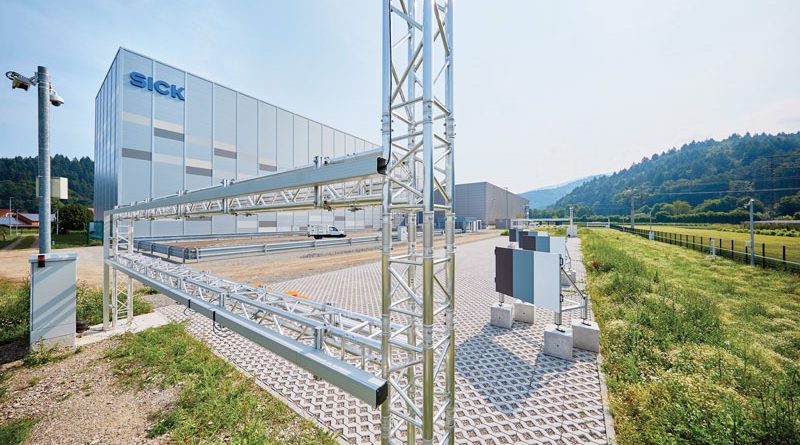Smart Sensors for 4.0 Factories
Sick welcomed the press at its Waldkirch headquarters to show that smart sensors and data transparency are the winning combination for the 4.0 smart factory. Potential and advantages will be on show in live streaming at the Hanover trade fair
by Claudia Dagrada
Taking a look at the present and future of smart sensors: this was the aim of the first global press conference organized by Sick at the end of January. The German company, specializing in the production of sensors, photocells and products dedicated to industrial and process automation, opened the doors of its headquarters in Waldkirch, near Freiburg, to about seventy journalists. For two days it was possible to see what happens behind the scenes of the 4.0 future, discovering its products, potential and solutions. Visitors were welcomed by Robert Bauer and Mats Gökstorp, Chairman and member of the Executive Board respectively, providing the starting point for a series of speeches.
Investing more and more in R&D and in new start-ups
Sick increased its engagement in research towards an increasingly digital future. The company in 2017 destined 11% of its revenues to R&D, over 25 million more than in 2016 (2018 data will be available as from the end of April). This means almost 170 million euro, an 1,000 persons employed in research centres in Germany, Italy, Sweden Hungary, Singapore, Malaysia, China and the United States. Sick also launched a series of internal start-ups, focused on next-generation technologies. Before production starts, all new technologies are tested in dedicated centres. During the press conference it was possible to visit the one in Buchholz. This new Outdoor Technology Center provides concrete evidence as to Sick’s competence in sensor applications for outdoor environments. The centre is made up of seven areas on an outdoor surface of 3,500 square metres. Here the solutions dedicated to traffic control and perimeter areas, to automatic driving of means of transport and to environmental monitoring are tested and fine-tuned. This means barriers, encoders, security laser scanners, ultrasound sensors, systems for atmospheric detection and more. All of this took place in real-life conditions, to provide clients with a quality which goes beyond weather conditions.
Production and logistics are online thanks to data transparency
One of the aims which Sick pursues is tackling first lot productions with the same cost and speed as mass production, following the key 4.0 principles: connectivity, transparency, flexibility and accessibility of data. For the company the future is already happening, since this challenge is accessible even for SMEs. All of this will be tangible at the next Hannover Messe, scheduled from April 1st to April 5th, as Bernhard Müller, Sick’s Senior Vice President for Industry 4.0, explained: “We intend showing our visitors how it is possible to connect rationally production and logistics online thanks to data transparency”. The key elements of Industry 4.0 revolve around data: integration in the data world, with the need of new communication protocols just like Io-Link for small sensors; trust between companies in the exchange of data; the development of a cloud environment in order to solve 4.0 industrial applications. But generating data is not enough, thee must also be usable.
The factory of the future will be in live streaming in Hanover
At the Hanover trade show, at the Sick stand, a screen will show in live streaming ongoing activity in the production site in Freiburg, the 4.0 NOW Factory: 600 km away, each sensor resent in the plant will be connected online, and it will be possible to consult parameters and data sent to the cloud in real time.
The new production plant, opened last year, has been created with an Industry 4.0 outlook, and every passage is tracked. On a surface area of 1.050 m2, 13 persons, 4 of whom are technicians, manage the production of 5 families of photocells, which may be declined in 500,00 variations. Thanks to sensors which monitor the areas, and slow down or stop work in case of risks, persons, vehicles and machinery share the same space in full safety. Visitors to the Sick stand in Hannover will see in real time automatically guided carts (AGC) moving around to supply the various robots and pick up the finished products.
The advantages of object tracking in production and logistics processes
Precise localization in production and logistics is a topic which Sick follows closely, so much so that one of its new internal start-ups will deal precisely with object tracking.
Having access at any given time to space-time coordinates, detected and collected continuously, is very useful. Ultra-broad band tags, LiDAR Contour Mapping, sensors for driving in aisles and sensors for infrastructures are therefore used which reveal their position and that of the required objects, sending it to a cloud. Data gathered are then analyzed by specific tools, which visualize the intervention fields in production and logistic processes. This has many advantages: by knowing the position of every element, it is possible, for instance, to adapt rapidly the paths followed by automatically driven shuttles, to reconsider flexibly the timing of every production phase and to manage the flow of material based on consumption.
From autonomous programming of application to deep learning
“Flexibility” is one of the keywords for Sick, and to create flexible solutions for automation applications it developed AppSpace. This is an ecosystem allowing the development of application software on a selection of programmable sensors. In this way the performances of solutions may be optimized based on specific requirements. Besides, one of Sick’s new internal start-ups is developing the first deep learning applications.
Sensors learn how to recognize particular shapes by means of a large amount of images, automatically associating he images collected to a requested result.
The pilot project, with a dedicated team of 14 persons, will be showcased a the Hanover trade fair along with other Sick novelties. On this occasion the focus will be the wood industry, to study and recognize rapidly the various elements of the structure of wood. l

